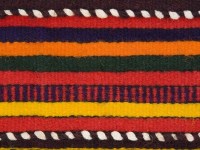A puzzle is a toy or game that cannot be completed easily and requires thought and repeated attempts. Jigsaw puzzle is a set of varied, irregularly shaped pieces in which a photograph, painting, or illustration is cut up into many pieces.
In a world increasingly dominated by screens, finding a relaxing yet stimulating hobby can be a challenge. One such activity gaining popularity is Textile Jigsaw Puzzles. These puzzles feature detailed images inspired by textile designs such as woven fabrics, lace, embroidery, and prints, offering a creative twist that captivates both puzzle enthusiasts and textile lovers alike. There are lots of free puzzles in online. Besides, you can also get puzzles set in supershop or craft and hobby stores.
A Brief History of Jigsaw Puzzles
The jigsaw puzzle has a rich history that dates back to the 1760s. It was invented by John Spilsbury, a London cartographer and engraver, who mounted a map on a piece of wood and cut it along the borders of countries. He called his invention a “dissected map,” and it was used as an educational tool to teach geography.
The hobby gained popularity, especially among the wealthy, and became a fashionable parlor activity during the Victorian era—even Queen Victoria was a known enthusiast. The 20th century brought the shift from hand-cut wood to mass-produced cardboard puzzles, making them an affordable and accessible pastime for everyone. This evolution set the stage for the diverse range of puzzles we enjoy today, including the artistic niche of textile puzzles.
What are Textile Jigsaw Puzzles?
Textile Jigsaw Puzzles are puzzle sets created using textile-themed images. These may include fabric patterns, weaving structures, embroidery designs, or traditional textile arts. Instead of traditional puzzles featuring landscapes or famous paintings, these puzzles challenge the puzzler with colors, patterns, and textures found in the world of textiles.
The designs can range from colorful cartoon seamless patterns and vivid red, pink, and orange modern designs to images that mimic brown silk or zebra textile backgrounds
This variety means that every puzzle is a unique visual experience. Assembling a textile puzzle is like piecing together a beautiful quilt or a complex piece of wearable art, one piece at a time.
Why Textile Jigsaw Puzzles are Special?
Textile jigsaw puzzles serve as more than simple entertainment; they are creative brain workouts that improve cognitive functions such as concentration, problem-solving, and spatial awareness. The complex and repetitive patterns found in textiles add a layer of challenge that sharpens mental acuity. Key points are given below:
- Creative Stimulation: The variety of colors, textures, and designs sparks creative thinking.
- Stress Relief: Working on puzzles helps calm the mind and reduce anxiety.
- Brain Workout: Matching patterns improves memory, problem-solving, and concentration.
- Connection to Textiles: For textile students or professionals, puzzles provide a fun way to engage with fabric patterns outside the classroom.
Benefits for Textile Students and Designers
The act of doing a jigsaw puzzle is a powerful cognitive exercise with benefits that extend far beyond simply filling time. It’s a holistic workout for your brain that offers a surprising range of advantages. For students in textile engineering or fashion design, Textile Jigsaw Puzzles act as a unique learning tool. They help in:
- Boosts Problem-Solving and Logic: Completing a jigsaw puzzle can’t be cheated; it requires critical thinking and reasoning. You learn to recognize patterns, shapes, and colors, and develop strategies for where pieces might fit.
- Enhances Visual-Spatial Reasoning: Clinical trials have shown that working out how smaller pieces fit into the bigger picture develops crucial skills of movement, depth, and distance perception, known as visuospatial functioning.
- Improves Memory and Concentration: The focus required to sort through pieces and find matches reinforces connections between brain cells, improving short-term memory. Enhancing patience and persistence, skills necessary in design projects. This concentrated effort can also help improve your attention span over time.
- Develops Fine Motor Skills: The simple act of picking up, pinching, and manipulating small puzzle pieces helps to develop and refine fine motor skills, which is beneficial for both children and adults.
- Reduces Stress and Anxiety: As you concentrate on searching for colors and shapes, your mind can enter a state of flow, allowing stresses and anxieties to fade away and creating a sense of calm and well-being. It’s a form of meditation that results in a completed picture.
A Fun Activity for All Ages
Textile puzzles are not limited to professionals. Families, children, and seniors can enjoy them as well. Kids can learn about fabrics while improving hand-eye coordination, while older adults can keep their minds active through puzzle-solving.
How to Get Started with Textile Jigsaw Puzzles
- Choose the Right Puzzle Size: Beginners should start with smaller puzzles of 100–300 pieces, while experienced puzzlers can opt for larger, more detailed sets.
- Select Textile Designs You Love: Pick puzzles featuring your preferred textile styles—whether it’s traditional embroidery, ikat patterns, or modern fabric prints.
- Organize Pieces by Color or Pattern: Sorting textile puzzle pieces by color shades or distinct motifs makes assembly smoother and more enjoyable.
- Work in Sections: Focus on smaller sections such as borders or motifs before connecting the entire puzzle, which makes complex textile patterns easier to manage.
Digital Textile Puzzles
With technology, Textile Jigsaw Puzzles are now available online and as mobile apps. These digital versions allow users to solve puzzles anytime, making them a portable and eco-friendly option.
Where to Find Textile Jigsaw Puzzles
Many specialty puzzle brands and online platforms now offer textile-themed puzzles due to growing interest in artisanal designs. You can find them through:
- Craft and hobby stores
- Online marketplaces that specialize in puzzles or textile art
- Websites dedicated to handmade or independent textile art products
Tips for Assembling Your Textile Puzzle
While putting together a textile puzzle is fun, its unique patterns can also be a challenge. Here are a few expert tips to help you assemble your puzzle faster and with less frustration.
- Choose the Right Work Area: Select a flat, well-lit surface that won’t be disturbed. Good lighting is key to properly seeing the subtle variations in color and pattern.
- Sort with the Pattern in Mind: After turning all pieces picture-side up and assembling the border, sort the remaining pieces. For textile puzzles, group pieces by dominant colors or specific repeating patterns.
- Focus on Small Sections: Instead of trying to work on the entire puzzle at once, focus on completing a small, recognizable section of the pattern. Once a small section is assembled, you can place it within the puzzle’s framework.
- Pay Attention to the Shape: All puzzle pieces have knobs (tabs) and holes (blanks). If you get stuck on the pattern, try looking at the shapes of the pieces themselves. Sometimes, searching for a specific unique shape can help you find a match.
Conclusion
Textile jigsaw puzzles are a perfect blend of art and challenge. They offer a stimulating, creative way to boost brain function while immersing yourself in the beauty of textile design. Whether you are a puzzle lover or a textile enthusiast, these puzzles provide a rewarding pastime that sharpens your mind and celebrates craftsmanship.
Founder & Editor of Textile Learner. He is a Textile Consultant, Blogger & Entrepreneur. Mr. Kiron is working as a textile consultant in several local and international companies. He is also a contributor of Wikipedia.






